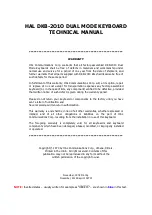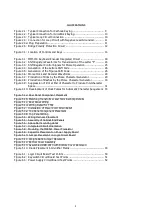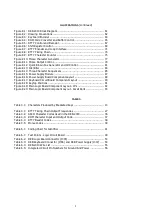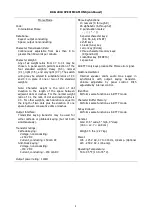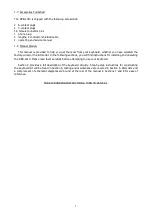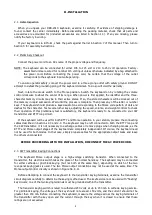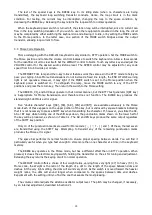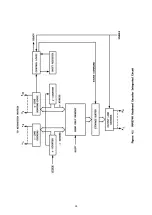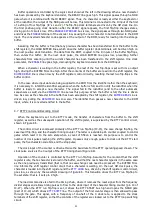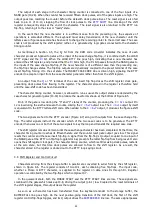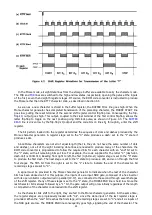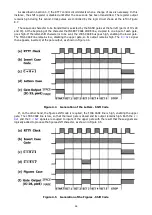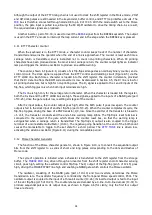
13
III. OPERATING YOUR KEYBOARD
3.1 Introduction
The many advanced features of the DKB-2010 keyboard make it easy to produce flawless RTTY and
Morse code signals. The operating tips presented in this section will help you take full advantage of your
keyboard's capabilities, RTTY operation will be covered first. Since most features are operative in both
modes, Morse operation is very similar. The few differences are explained in Section 2.3. Figure 3.1 shows
the position of the keys and controls.
3.2 RTTY Operation
Switch the keyboard on by rotating the volume control clockwise to about the middle of its range. The
quick brown fox and identifier circuits may be active when power is applied. If so, they will complete their
sequences and clear themselves in ten seconds or less. Since it is possible for both circuits to start in the
active state, the output during this period may be unintelligible. When the sequence is complete, set the
mode control to the desired RTTY operating speed, and turn on the station loop supply and printer.
To transmit any character, simply press the corresponding key. It is not necessary to depress one of the
SHIFT keys before typing numbers, as the keyboard will produce the required figures-case code
automatically before transmitting the number. Likewise, the next time you strike one of the letter keys, the
letters-case code will be sent. The most common punctuation marks (period, comma, colon, semicolon, and
fraction bar) can also be typed without using the SHIFT key.
Some punctuation marks appear on the upper half of their keytops. To type these characters, press
either of the two SHIFT keys and hold it down white you strike the desired key. Then release the SHIFT key.
Five of the keys are inscribed with two characters joined by brackets. The characters these keys produce
change when the keyboard is switched from RTTY to Morse operation. The keys and their functions are
listed in Table 3.1.
In the RTTY mode, the character shown on the lower half of the key is transmitted if neither of the
SHIFT keys is depressed when the character key is struck. If, on the other hand, a SHIFT key is held down
while the colon key is struck, the bell code will be transmitted. The hyphen and semicolon keys produce
blanks in the shifted mode, The carriage return and linefeed keys transmit the same character regardless of
the shift key position.
Unless you are a very proficient typist, you probably will not be able to type characters faster than the
keyboard can transmit them. If you type in short, rapid bursts, however, you may find that you can
momentarily "get ahead" of the keyboard – that is, you may strike a new key before the code for the
preceding one has been transmitted in its entirety. The three-character buffer memory and n-key rollover
features of the DKB-2010 help to compensate for these typing speed variations.
Table 3.1: Characters Produced by Bracketed Keys
Key
RTTY Mode
Morse Mode
Unshifted
Shifted
Unshifted
Shifted
Bell
:
Colon
Bell
__
SK
Colon
AS
-
Hyphen
Blank
__
AS
Hyphen
BT
;
Semicolon
Blank
__
BT
Semicolon
AR
LF
Line
Feed
Line
Feed
__
AR
__
AR
KN
RETURN
Carriage
Return
Carriage
Return
__
KN
__
KN
Summary of Contents for DKB-2010
Page 1: ......
Page 20: ...18...
Page 39: ...37 Table 4 3 ROM Converter Input and Output Codes...
Page 52: ...50 Figure 6 1 Logic Circuit Board Test Points...
Page 53: ...51 Figure 6 2 Keyswitch Circuit Board Test Points...
Page 54: ...52 Figure 6 3 Power Supply Circuit Board Test Points...
Page 57: ...55 Table 6 4 DKB 2010 Wire List...
Page 63: ...61...
Page 64: ...62...
Page 65: ...63...
Page 67: ...65...
Page 69: ...67...
Page 71: ...69...
Page 73: ...71...
Page 75: ...73...
Page 77: ...75...
Page 79: ...77...
Page 81: ...79...
Page 83: ...81...
Page 85: ...83...
Page 87: ...85...
Page 89: ...87...
Page 91: ...89...
Page 92: ...90...
Page 93: ...91...
Page 94: ...92...
Page 95: ...93...
Page 96: ...A1 EXTENDED MEMORY OPTION FOR THE DKB 2010 KEYBOARD INSTRUCTION MANUAL...
Page 100: ...A5...
Page 101: ...A6...


